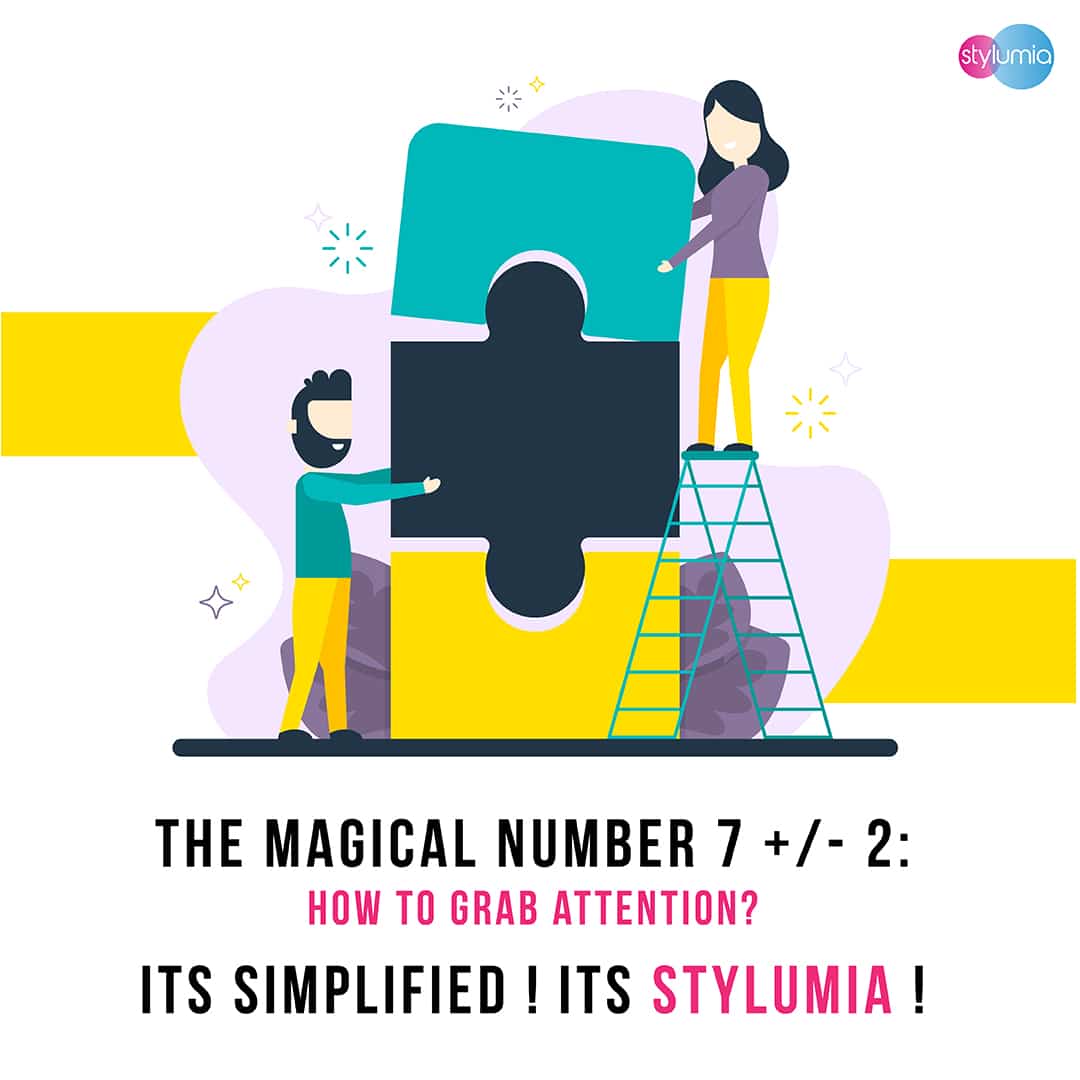The Magical Number 7 +/- 2: How To Grab Attention?

 |
Imagine a fashion store you enter, if you see too many things happening, what will be your response? Don’t you get confused and get a tendency to repel?
It is happening because of cognitive science. This edit looks at if there is a limitation to our attention? We keep talking about the stickiness of customers. It all starts with attention. Attention starts with our ability to retain our observation in human memory. Imagine this to be Human RAM.
George A. Miller’s Experiment
The Magical Number Seven experiment purports that the number of objects an average human can hold in working memory is 7 ± 2. What this means is that the human memory capacity typically includes strings of words or concepts ranging from 5-9. This information on the limits to the capacity for processing information became one of the most highly cited papers in psychology.


The Magical Number Seven Experiment was published in 1956 by cognitive psychologist George A. Miller of Princeton University’s Department of Psychology in Psychological Review. In the article, Miller discussed a concurrence between the limits of one-dimensional absolute judgment and the limits of short-term memory. In a one-dimensional absolute-judgment task, a person is presented with a number of stimuli that vary on one dimension (such as 10 different tones varying only in pitch) and responds to each stimulus with a corresponding response (learned before). Performance is almost perfect up to five or six different stimuli but declines as the number of different stimuli are increased.
Millers Law Beyond Information
We live in a world with an exponentially increasing amount of information. By not organizing it properly, or eliminating some completely, ultimately, it degrades our ability to complete critical tasks for the purposes of survival (navigation/gaining income). That is why it’s so useful to omit items, products, and services from your life that aren’t giving a quality return on investment. This falls in line with the Pareto principle, the idea that 80% of your outcomes come from 20% of your investments. Are you juggling too many tasks per day to be efficient? Is your team using too many tools to collaborate? Do you have too many members on your team? Are you overloading your new employees with information, leading to confusion?
Miller’s law teaches us that humans have a finite amount of information they can process, and that information overload will lead to distraction that negatively affects performance. Companies should look for ways to organize information in a way that is much more digestible for their customers and employees. This could be by eliminating tools or applications that are producing cognitive overload, reducing the number of members on a team, or even organizing your departments based on our knowledge of working memory.
Consumers are human and we can clearly see Miller’s law application in retail in various areas other than those generic ones above
1. Number of Colors in a range
2. Number of groups of products in a collection
3. Visual display at stores
4. Visual themes in communications etc..
Isn’t true that we all tend to remember the simple ones like the Apple Store where the clutter is the least?

Hope this edit gave you a human perspective on the design of things that can help you grab consumers’ attention. At Stylumia we strive to make our user experience as simple as possible with less cognitive load. That is one of the reasons we took a visual approach to business intelligence. We have a long way to go, and we can share with you with confidence that a lot is happening in this direction for our users to get actionable insights with less cognitive load.



